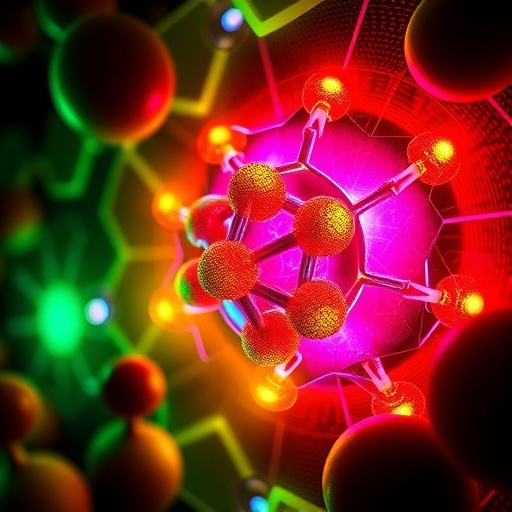In a remarkable breakthrough in energy storage technology, researchers led by Zhu et al. have introduced a novel biomass-derived hard carbon material that exhibits superior rate capability. This groundbreaking research, published in the prestigious journal Ionics, showcases a co-doping strategy utilizing nickel (Ni) and nitrogen (N) to enhance the electrochemical performance of carbon anodes. The implications of this advance could stretch far beyond laboratory settings, potentially revolutionizing the field of lithium-ion batteries and other energy storage systems.
The quest for efficient and sustainable energy storage solutions has been ongoing, particularly as the demand for renewable energy sources continues to grow. Traditional carbon materials used in anodes have been challenged by their limited performance at high current rates, which constrains battery power output and efficiency. The innovative approach taken by Zhu and his team involves leveraging biomass as a precursor for hard carbon synthesis, an environmentally friendly method that can unlock new possibilities for energy storage applications.
The process begins with the carbonization of biomass, which is not only a renewable resource but also abundant and low-cost. The transformation of biomass into hard carbon entails heating it in an inert atmosphere, resulting in a structured form of carbon that possesses excellent electrical conductivity and electrochemical stability. This foundational step sets the stage for further enhancements, where the co-doping of Ni and N plays a pivotal role in boosting the performance characteristics of the resultant material.
Through meticulous experimentation, the research team discovered that introducing Ni and N into the hard carbon structure significantly improved lithium ion diffusion and charge transfer capabilities. The doping process not only modifies the electronic properties of the carbon framework but also creates additional active sites for lithium ion storage. This dual functionality is crucial for achieving higher rate capabilities, especially under conditions of rapid charge and discharge cycling.
In battery tests, the Ni/N co-doped hard carbon demonstrated outstanding rate performance, surpassing existing carbon anodes commonly used in commercial applications. The results revealed a remarkable ability to maintain high capacity even at elevated current densities, highlighting the material’s suitability for high-power applications. The research team reported that this new material could potentially facilitate the development of batteries that charge faster and deliver energy more efficiently, meeting the evolving demands of modern electronic devices and electric vehicles.
Another noteworthy aspect of this study is its contribution to the field of green technology. By utilizing renewable biomass feedstocks instead of conventional petroleum-based precursors, the findings align with global efforts to reduce carbon footprints and promote sustainable practices in battery manufacturing. This innovative approach underscores the importance of exploring alternative materials that are both effective and environmentally responsible.
The synthesis method proposed by Zhu et al. also opens avenues for further research. The versatility of biomass as a precursor means that various types of waste materials, ranging from agricultural residues to forestry by-products, can be utilized. This points to a future where energy storage materials could be produced sustainably and at scale, offering excellent performance while minimizing environmental impact.
As the scientific community looks to adopt these promising findings, future investigations will likely explore the long-term stability of the Ni/N co-doped hard carbon during extensive cycling. Understanding how the material behaves over time in real-world applications will be critical for its adoption in commercial battery technologies. Ongoing research will also focus on optimizing the doping ratios and carbonization conditions to fine-tune the performance characteristics even further.
In summary, Zhu et al.’s pioneering work on biomass-derived hard carbon through Ni/N co-doping presents a significant leap forward in energy storage technology. The integration of renewable materials with advanced doping techniques offers a sustainable pathway towards high-performance batteries. This research not only addresses the pressing demand for efficient energy storage solutions but also highlights the potential for integrating environmental considerations into technological advancements. As battery technologies evolve, the findings from this study may pave the way for new innovations that meet global energy needs responsibly.
The momentum generated by this research could lead to exciting developments in the battery sector, prompting further exploration of how similar strategies can be applied across different materials and energy storage systems. With the continued push for greener technologies, the future of energy storage looks bright, powered by innovations that harness the power of nature while delivering cutting-edge performance.
In conclusion, the synergistic effects of utilizing biomass combined with advanced doping techniques underscore the potential for significant advancements in battery technology. The implications of these findings extend far beyond immediate applications, representing a step towards a more sustainable and efficient energy future. Researchers and industry leaders alike are encouraged to delve deeper into the possibilities this research opens, as the energy landscape continues to evolve towards more sustainable solutions.
Subject of Research: Biomass-derived hard carbon for energy storage applications.
Article Title: Superior rate capability of biomass-derived hard carbon enabled by Ni/N Co-doping strategy.
Article References:
Zhu, B., Gao, S., Zhang, W. et al. Superior rate capability of biomass-derived hard carbon enabled by Ni/N Co-doping strategy. Ionics (2025). https://doi.org/10.1007/s11581-025-06833-w
Image Credits: AI Generated
DOI: 10.1007/s11581-025-06833-w
Keywords: Biomass-derived carbon, lithium-ion batteries, co-doping, nickel, nitrogen, energy storage.
Tags: biomass-derived hard carboncarbonization of biomass processelectrochemical performance enhancementenergy storage technology breakthroughsEnvironmental Impact of Energy Storagehigh rate capability carbon anodesinnovative battery materialslithium-ion battery advancementslow-cost energy storage solutionsNi/N co-doping strategyrenewable resource carbon synthesissustainable energy storage solutions





